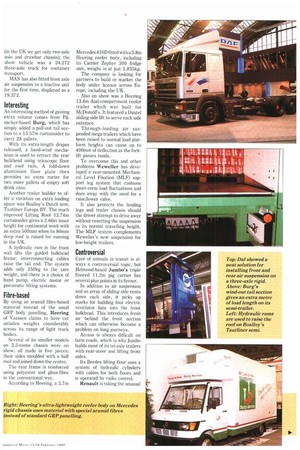Fibre-based
Page 13

If you've noticed an error in this article please click here to report it so we can fix it.
By using an aramid fibre-based material instead of the usual GRP body panelling, Heering of Vaassen claims to have cut unladen weights considerably across its range of light truck bodies.
Several of its smaller models on 3.5-tonne chassis were on show, all made in five pieces: their sides moulded with a half roof and joined down the centre.
The rear frame is reinforced using polyester and glass-fibre in the conventional way.
According to Heering, a 3.7m Mercedes 4100 fitted with a 3.8m Heering reefer body, including its Carrier Zephyr 300 fridge unit, weighs in at just 1,835kg.
The company is looking for partners to build or market the body under licence across Europe, including the UK.
Also on show was a Heering 13.6m dual-compartment reefer trailer which was built for McDonald's. It featured a Dautel sliding side lift to serve each side entrance.
Through-loading air suspended mega trailers which have been raised to normal load platform heights can cause up to 400mm of deflection as the forklift passes inside.
To overcome this and other problems Weweller has developed a rear-mounted Mechanical Level Fixation (MLF) support leg system that cushions short-term load fluctuations and does away with the need for a raise/lower valve.
It also protects the landing legs and trailer chassis should the driver attempt to drive away without resetting the suspension to its normal travelling height. The MLF system complements Weweller's new suspension for low-height trailers.




















































































